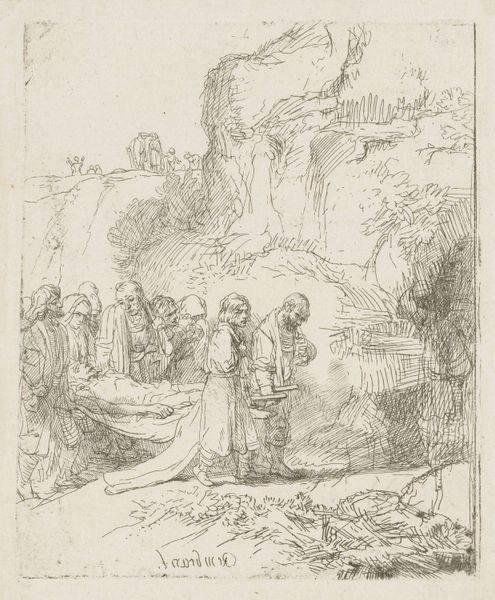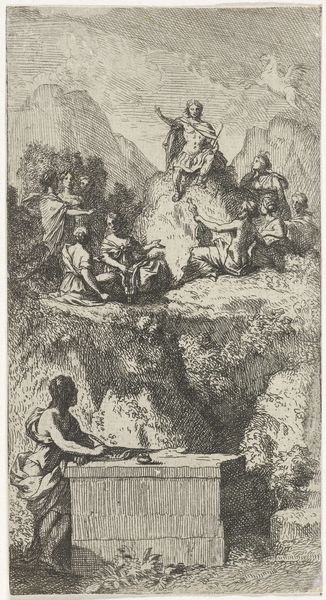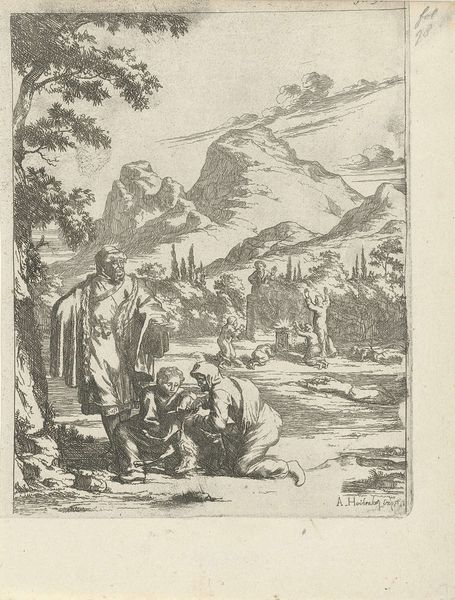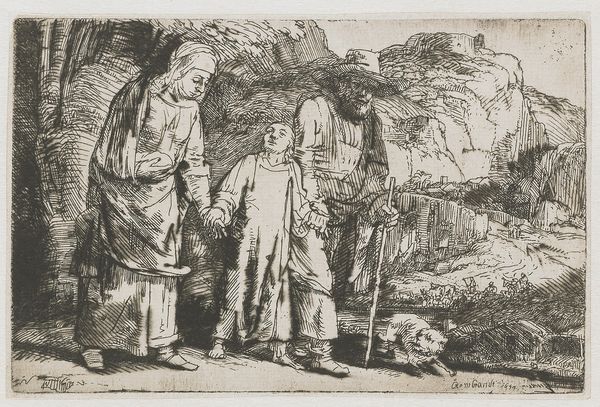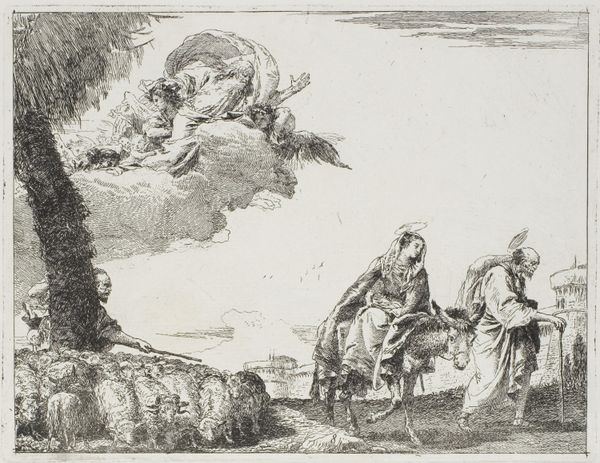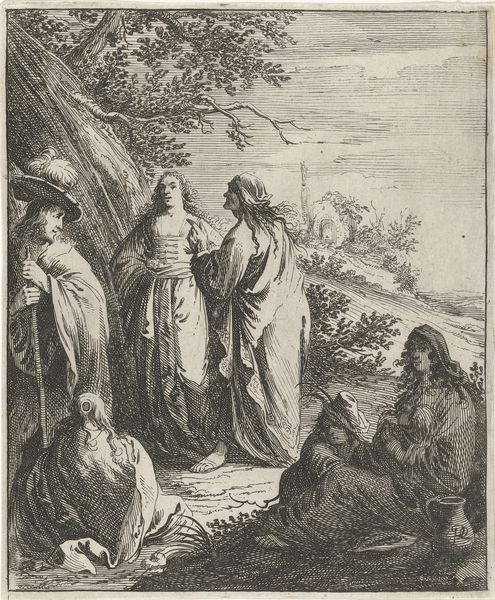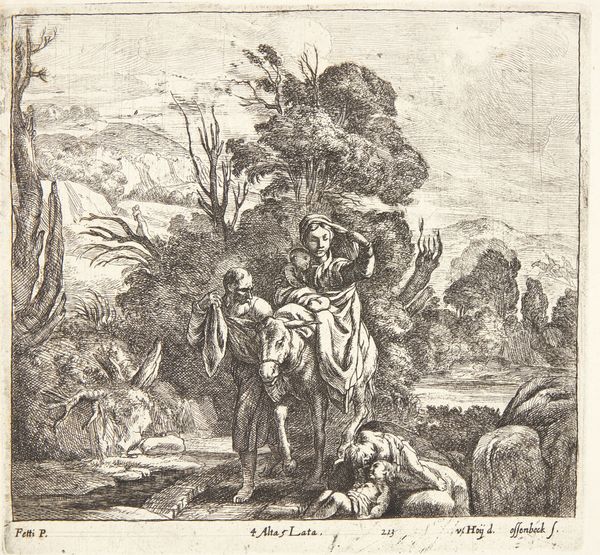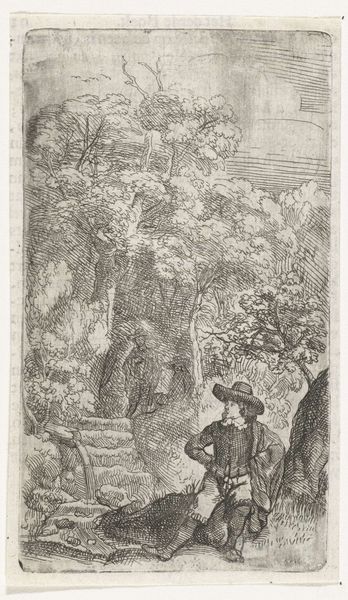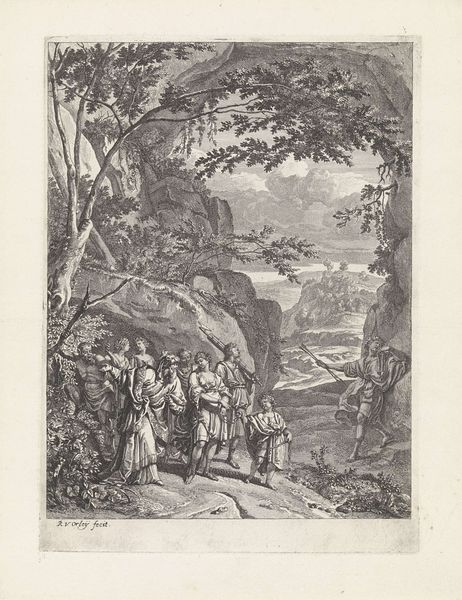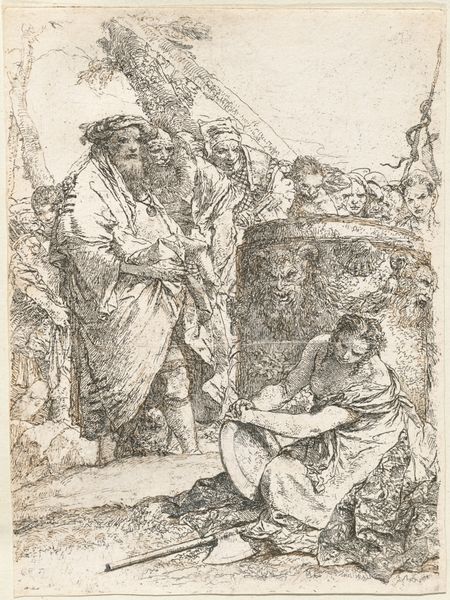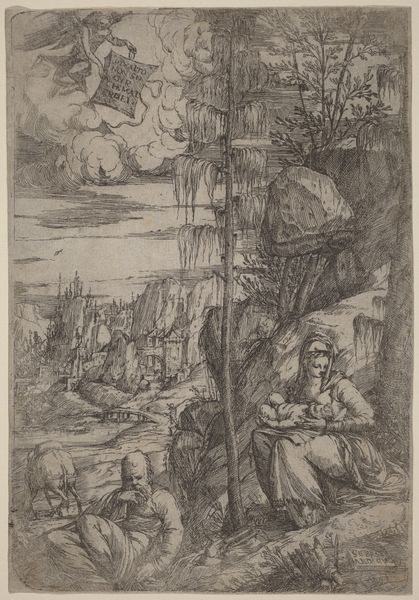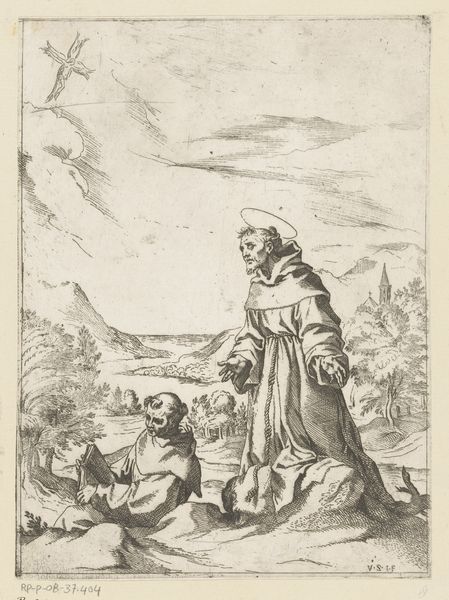
print, etching, engraving
#
narrative-art
#
baroque
#
dutch-golden-age
# print
#
etching
#
figuration
#
chiaroscuro
#
line
#
history-painting
#
engraving
Dimensions: 131 mm (height) x 108 mm (width) (plademaal)
Curator: Ah, here we are in front of Rembrandt van Rijn's "Christ Carried to the Tomb," dating from 1643. It’s an etching and engraving, showcasing the artist's incredible skill with line and light. Editor: The whole scene has a kind of hushed reverence, doesn’t it? The air feels heavy with unspoken grief. It’s like the world is holding its breath. Curator: Precisely. Rembrandt was a master of conveying emotion. What's fascinating to me is how he uses the stark contrast—the chiaroscuro—to draw our eyes to the most crucial elements. Notice how the body of Christ, draped in that linen, becomes the focal point, radiating a faint light amidst the gloom. Editor: It’s all delicate lines, though. If you compare the foreground with the crowd receding in the background you can really get a sense of Rembrandt's style of suggestion, the etching seems so intimate despite the scale of the grief depicted. Curator: Yes, it’s more suggestive than illustrative. It's really about the relationships between light and dark areas, rather than strictly accurate representations. In terms of composition, Rembrandt’s placement of the figures on a diagonal creates a dynamic sense of movement. They aren't simply standing; they're journeying toward the tomb. The line work gives it energy but that energy is so somber. Editor: Even the landscape echoes that sentiment, doesn't it? The rough textures and the large rocks are looming overhead. I almost imagine them as silent mourners. There are all these secondary characters kind of blended into the hills on the horizon as well, the event itself a landscape as much as it's anything else. Curator: The landscape absolutely plays a role in setting the mood. That, combined with the intimate scale typical of Rembrandt's prints, brings a monumental moment in history down to a deeply personal level. Editor: Looking at it, you can feel the weight, the silence, and that collective sorrow, captured in mere lines and shadows. Such power, it gets me every time! Curator: It really encapsulates the human condition in that one moment. Seeing "Christ Carried to the Tomb," what lingers for me is how Rembrandt transforms suffering into something profoundly moving and human.
Comments
No comments
Be the first to comment and join the conversation on the ultimate creative platform.
